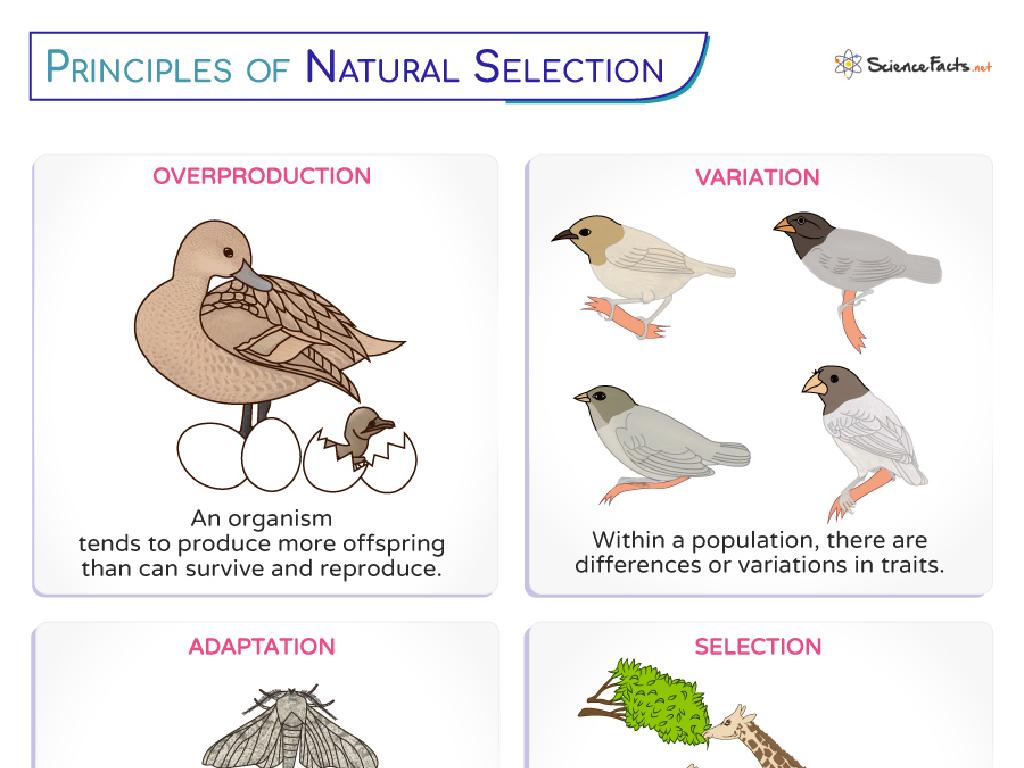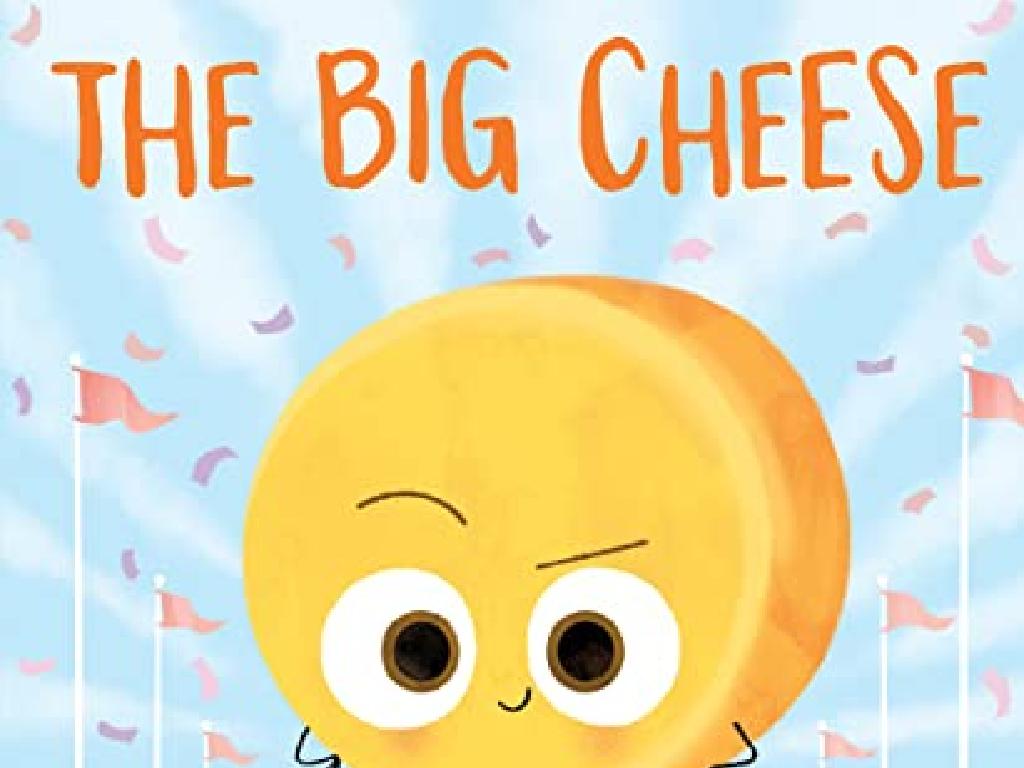Replace The Plural Noun With A Personal Pronoun
Subject: Language arts
Grade: Third grade
Topic: Pronouns
Please LOG IN to download the presentation. Access is available to registered users only.
View More Content
Introduction to Pronouns
– What are pronouns?
– Words that take the place of nouns, like ‘he’, ‘she’, ‘it’, ‘they’.
– Why use pronouns?
– To avoid repeating nouns and make sentences smoother.
– Pronouns in sentences
– ‘The kids are playing. They are happy.’ ‘They’ replaces ‘The kids’.
– Practice replacing nouns
|
This slide introduces the concept of pronouns to third-grade students. Pronouns are words used to replace nouns and avoid repetition, making our sentences sound better. Explain that pronouns can refer to people, animals, places, things, or ideas without naming them directly. Use examples to show how pronouns can replace plural nouns, such as ‘the children’ with ‘they’ or ‘the books’ with ‘them’. Encourage students to think of pronouns as shortcuts in language that make our conversations and writing quicker and easier to understand. After explaining, engage the class in an activity where they replace nouns with pronouns in given sentences.
Understanding Plural Nouns
– What are plural nouns?
– Words that mean more than one thing, like ‘dogs’ or ‘cars’.
– Examples of plural nouns
– ‘Cats’, ‘trees’, ‘houses’ are all plural nouns.
– Using plural nouns in sentences
– ‘The dogs bark loudly.’ Here, ‘dogs’ is a plural noun.
– Replacing with pronouns
– Instead of ‘The dogs’, we can say ‘They’.
|
This slide introduces the concept of plural nouns to third-grade students. Begin by explaining that plural nouns are words we use to talk about more than one person, place, or thing. Provide clear examples of plural nouns and use them in simple sentences to show how they are used in everyday language. Then, demonstrate how these plural nouns can be replaced with pronouns like ‘they’ or ‘them’ to avoid repetition and simplify sentences. Encourage students to think of their own examples and practice replacing plural nouns with pronouns both in writing and speaking activities.
Personal Pronouns for Plural Nouns
– What are personal pronouns?
– Words like ‘they’, ‘we’, and ‘you’ that stand for people or things
– How to replace plural nouns
– Find a group noun and use ‘they’, ‘we’, or ‘you’ instead
– ‘The students’ turns into ‘They’
– Use ‘they’ for ‘the students’, ‘we’ for ‘my family and I’
– Practice with more examples
|
This slide introduces the concept of personal pronouns and their use in replacing plural nouns to simplify sentences and avoid repetition. Start by explaining that personal pronouns are words used to refer to people or things without naming them directly. Show how to identify plural nouns in a sentence and choose the correct personal pronoun to replace them. Use clear examples like ‘the students’ to ‘they’ to illustrate the concept. Encourage students to come up with their own sentences and practice replacing plural nouns with personal pronouns. This will help them understand how pronouns can make sentences shorter and easier to read.
Pronoun Practice: Replacing Plural Nouns
– Identify plural nouns in sentences
– Find words that talk about more than one thing, like ‘dogs’ or ‘cars’.
– Choose the correct personal pronoun
– Decide if ‘they’, ‘we’, or ‘you’ fits best for the plural noun.
– Fill in the blanks with pronouns
– Use ‘they’, ‘we’, or ‘you’ to complete sentences correctly.
|
This slide is for a class activity focused on understanding and practicing the use of personal pronouns in place of plural nouns. Begin by explaining what plural nouns are and provide examples. Then, guide students on how to select the appropriate personal pronoun (‘they’, ‘we’, ‘you’) to replace the plural nouns. For the activity, provide sentences with plural nouns and have students fill in the blanks with the right pronoun. For example, ‘The children are playing’ becomes ‘They are playing.’ Have different sentences ready for students to practice with, and encourage peer review to foster collaborative learning. This exercise will help solidify their understanding of pronouns and their usage in language.
Interactive Game: Pronoun Match
– Match nouns with pronouns
– Work together in pairs
– Complete the pronoun game
– Find the right personal pronoun for each plural noun
– Share answers with the class
|
This interactive game is designed to help students understand the concept of replacing plural nouns with the correct personal pronouns. Set up the classroom in a way that facilitates pair work and ensure that each pair has a set of matching cards. The cards should have plural nouns on one set and corresponding personal pronouns on the other. Guide the students to match ‘they’, ‘we’, ‘you’, or ‘I’ with the appropriate nouns. After the activity, ask the pairs to share their matches with the class to reinforce learning. Possible variations of the game could include using different plural nouns, creating sentences with the matches, or even a timed challenge to add excitement.
Class Activity: Pronoun Hunt
– Find objects in the classroom
– Write sentences with plural nouns
– For example, ‘The pencils are on the desk.’
– Change plural nouns to pronouns
– Now, ‘They are on the desk.’
– Share sentences with the class
|
This interactive activity is designed to help students understand the use of personal pronouns in place of plural nouns. Start by having students look around the classroom and list objects they find. Then, instruct them to write sentences using these objects as plural nouns. Next, guide them to replace the plural nouns with appropriate personal pronouns. Finally, encourage students to share their sentences with the class to reinforce their understanding. Possible variations of the activity could include working in pairs, creating a pronoun scavenger hunt, or drawing pictures to accompany their sentences.
Wrapping Up: Pronouns & Homework
– Recap: Pronouns replace nouns
– Why pronouns matter
– Pronouns make sentences shorter and avoid repetition
– Homework: 5 sentences
– Create sentences using plural nouns
– Swap plural nouns with pronouns
– Then, replace those nouns with ‘they’, ‘them’, or ‘their’
|
As we conclude today’s lesson, remind the students how pronouns can take the place of plural nouns to make our sentences sound better and not repetitive. Emphasize the importance of using pronouns to improve clarity in writing and speech. For homework, students should practice writing sentences that include plural nouns and then rewrite those sentences by replacing the nouns with appropriate pronouns. This exercise will help reinforce their understanding of pronouns and how they are used in context. Encourage creativity with their sentence examples and remind them to share their sentences in the next class for discussion and feedback.






